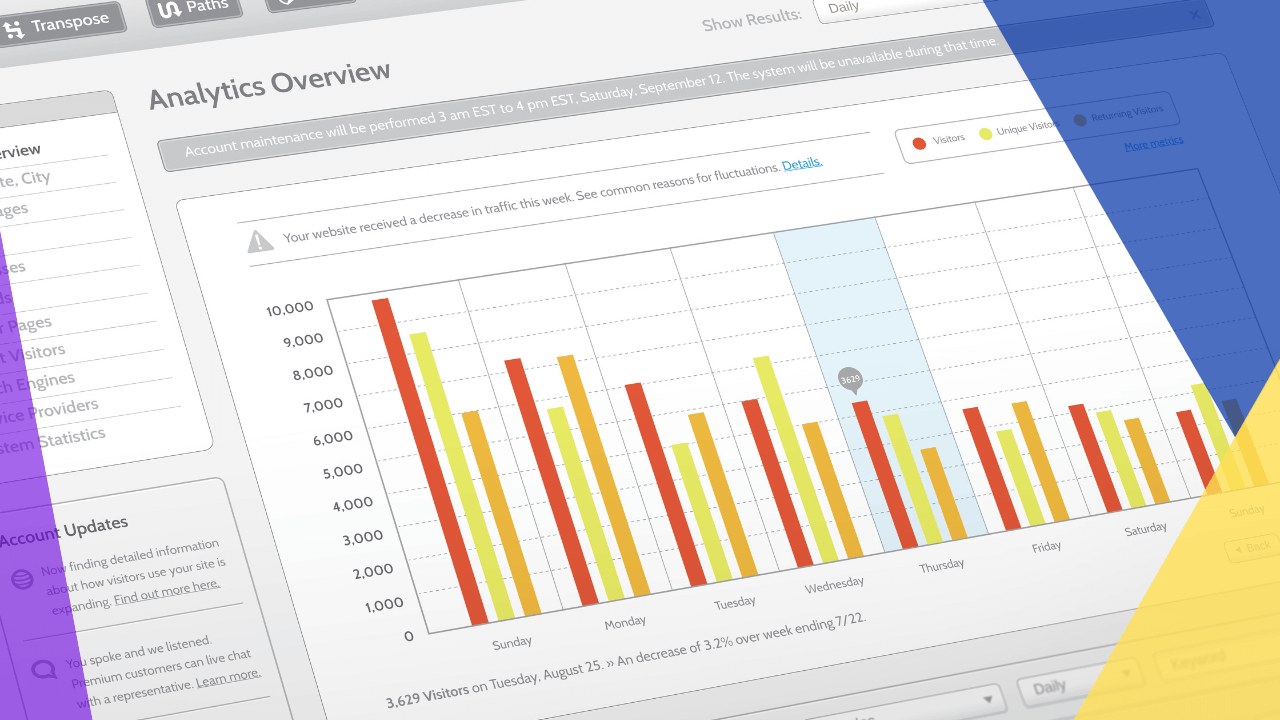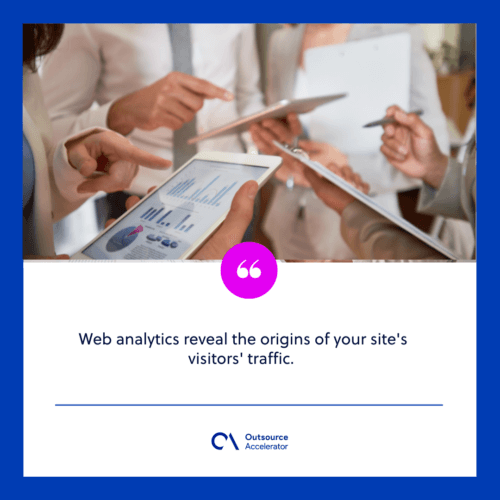A beginner’s guide to understanding web analytics

At present, different businesses have established their online presence. Web usage is growing daily and the need to create an effective digital strategy is high.
However, with the vast data and traffic that online platforms offer, it can be difficult for businesses to understand their visitor behavior.
A robust online presence can be the key to a business’s growth, providing increased exposure and better communication with prospective customers. But it is not enough without a well-thought-out strategy.
This is where web analytics comes into the picture. The data gathered equips businesses to decide which scope needs improvement and which is already working.
Organizations can use this analytics system to gain comprehensive insights into how the website acts and what the customers say about the products or services.
What is web analytics and why is it important?
Web analytics identifies measures based on a firm’s organizational and user goals. It uses historical data to determine the success or failure of those goals and drive strategy to create a holistic customer experience.
This process analyzes and creates reports on the browsing behavior of visitors once they are on the website.
You can collect data to understand how people interact with your website and identify opportunities for improved customer journey.
Other types of website data aside from essential information like age, gender, and location are the following:
- How they (visitors) landed on the site (traffic source)
- Most popular content on the company website
- Total conversions

The volume of data collected can be overwhelming. Therefore, it is essential to select which metrics to measure, especially at the outset.
Web analytics is crucial to a business’s success. It allows a company to gain a deeper understanding of website users and use those insights to enhance the user experience.
Through web analytics, you may add additional call-to-action (CTA) buttons or buy links to the top pages of your website to increase conversions.
Similarly, you may update all landing pages with the most recent content or redesign their whole layout and structure to make them appear current.
Web analytics can also shape a firm’s content writeups and SEO strategy. By examining the top-viewed posts, the content team can begin to identify what topics perform best with the audience.
Benefits of web analytics
Web analytics offers more help than it seems to understand user behavior across web pages.
Let’s look closely at how web analytics benefits your overall business strategy.
Track bounce rate
Web analytics can measure the bounce rate or the percentage of site visitors that depart after seeing only one page.
The bounce rate can be viewed as a site-wide measure or page-level metric.
At the page level, the bounce rate is the proportion of sessions that began on the page and did not navigate to another page.
Measure traffic
Web analytics reveal the origins of your site’s visitors’ traffic. Similar to visitor data, this parameter is often acquired using your website’s tracking code.
The number of traffic sources that can be measured varies on the web analytics tool.
Here are some of the traffic analytics tools that track multiple categories:
- Email marketing
- Paid search
- Direct traffic
- Organic search

Optimize marketing campaigns
Web analytics can measure unique marketing campaigns. By tracking advertisements that perform well vs. poorly, web analytics can find potentially high-returning campaigns that are more profitable.
Target the right audience
Web analytics offers businesses the knowledge to build and locate suitable target audiences. Relevant marketing campaigns to the right audiences will increase sales and conversions and improve a website.
Improve web services
A firm can identify possible issues on its website and with its services through web analytics.
For instance, if an online store’s sales funnel is weak and unclear, the number of purchases would fall, leading to a decline in income.
Users must discover the appropriate material when they visit the site at the proper time. Creating distinct landing pages for various reasons might also be beneficial.
3 main web analytics tools
Now that we have discussed web analytics and why it’s important, let’s look at some main tools your company might use to increase website traffic, leads, and revenue.
1. Google Analytics
Google Analytics is the most popular tool for web analytics. It allows you to monitor bounce rate, unique pageviews, traffic channels, user retention, and average session duration.
Recently, a new version of Google Analytics (GA4) is made available. It opens a smoother way to web analytics. If that’s not enough, you can export GA4 to Google Sheets and leverage tracking and reporting of your projects.
2. Crazy Egg
Heatmaps, scroll maps, and other types of visual reports may be generated by this one-of-a-kind web analytics tool. It can display precisely how site visitors are engaging with your website.
3. Google Website Optimizer
Google Optimize is a web analytics tool and a marketing platform by Google that helps increase conversion rates.
It is a free tool that can fulfill your site’s optimization needs because it runs almost all types of experiments on a website.
Enhance your website through web analytics
Web analytics can help any business website grow by collecting, reporting, and analyzing data.
You may enhance the user experience on your website and achieve broader marketing goals, such as increasing online sales.
Web analytics helps a company retain consumers, attract additional visits, and raise the amount of money each client spends.
There are still plenty of metrics to discuss. But, like most things, the amount of time it takes to utilize every tool must be considered.
Knowing about web analytics and how they can enhance your website is the first step in growing your business.







 Independent
Independent




